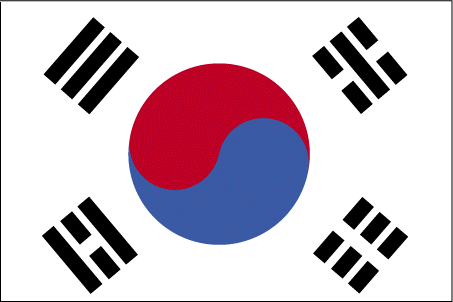 South Korea
South Korea United States
United States Mexico
Mexico Colombia
Colombia Peru
Peru Venezuela
Venezuela Argentina
Argentina Chile
Chile Spain
Spain Ecuador
Ecuador Guatemala
Guatemala Dominican Republic
Dominican Republic Singapore
Singapore El Salvador
El Salvador Costa Rica
Costa Rica Puerto Rico
Puerto Rico Bolivia
Bolivia Honduras
Honduras Panama
Panama Nicaragua
Nicaragua Brazil
Brazil Paraguay
Paraguay Canada
Canada Uruguay
Uruguay France
France Germany
Germany Russia
Russia Italy
Italy United Kingdom
United Kingdom Japan
Japan Cuba
Cuba Ireland
Ireland Switzerland
Switzerland Belgium
Belgium Netherlands
Netherlands Australia
Australia Portugal
Portugal Sweden
Sweden Finland
Finland India
India Aruba
Aruba Hong Kong
Hong Kong Norway
Norway Belize
Belize South Korea
South Korea Curacao
Curacao New Zealand
New Zealand Israel
Israel Philippines
Philippines Romania
Romania Austria
Austria Poland
Poland Equatorial Guinea
Equatorial Guinea China
China Bulgaria
Bulgaria Indonesia
Indonesia Denmark
Denmark Turkey
Turkey Czech Republic
Czech Republic Greece
Greece Ukraine
Ukraine Morocco
Morocco United Arab Emirates
United Arab Emirates U.S. Virgin Islands
U.S. Virgin Islands Reunion
Reunion Thailand
Thailand Taiwan
Taiwan Nigeria
Nigeria Cayman Islands
Cayman Islands South Africa
South Africa Haiti
Haiti North Macedonia
North Macedonia Egypt
Egypt Mozambique
Mozambique Pakistan
Pakistan Vietnam
Vietnam Hungary
Hungary Trinidad and Tobago
Trinidad and Tobago Andorra
Andorra Angola
Angola Iceland
Iceland Antigua and Barbuda
Antigua and Barbuda Croatia
Croatia Serbia
Serbia Saudi Arabia
Saudi Arabia Algeria
Algeria Moldova
Moldova Malaysia
Malaysia Turks and Caicos Islands
Turks and Caicos Islands Slovakia
Slovakia Lithuania
Lithuania Cabo Verde
Cabo Verde Caribbean Netherlands
Caribbean Netherlands Kazakhstan
Kazakhstan Mauritius
Mauritius Democratic Republic of the Congo
Democratic Republic of the Congo Estonia
Estonia Jordan
Jordan Nepal
Nepal Cote D'Ivoire
Cote D'Ivoire Jamaica
Jamaica Netherlands Antilles
Netherlands Antilles British Virgin Islands
British Virgin Islands Botswana
Botswana Cameroon
Cameroon Luxembourg
Luxembourg Bangladesh
Bangladesh Tunisia
Tunisia Guadeloupe
Guadeloupe Saint Kitts and Nevis
Saint Kitts and Nevis Georgia
Georgia Bahamas
Bahamas Armenia
Armenia Latvia
Latvia Cambodia
Cambodia Lebanon
Lebanon Malta
Malta Suriname
Suriname Bosnia and Herzegovina
Bosnia and Herzegovina Slovenia
Slovenia Kenya
Kenya French Guiana
French Guiana Albania
Albania Sri Lanka
Sri Lanka Barbados
Barbados Ethiopia
Ethiopia Kyrgyzstan
Kyrgyzstan Cyprus
Cyprus Zambia
Zambia Qatar
Qatar Togo
Togo Seychelles
Seychelles Ghana
Ghana French Polynesia
French Polynesia Vatican City
Vatican City Guyana
Guyana Senegal
Senegal New Caledonia
New Caledonia Solomon Islands
Solomon Islands Guinea-Bissau
Guinea-Bissau Oman
Oman Martinique
Martinique Bermuda
Bermuda Palestinian Territory
Palestinian Territory Saint Lucia
Saint Lucia Benin
Benin Belarus
Belarus Lesotho
Lesotho Uganda
Uganda Sint Maarten
Sint Maarten Gabon
Gabon Zimbabwe
Zimbabwe Kuwait
Kuwait Iraq
Iraq Myanmar
Myanmar
South Korea Flag Meaning & Details
64 VISITORS FROM HERE!| South Korea Flag |
 |
| Flag Information |
- white with a red (top) and blue yin-yang symbol in the center
- there is a different black trigram from the ancient I Ching (Book of Changes) in each corner of the white field
- the South Korean national flag is called Taegukki
- white is a traditional Korean color and represents peace and purity
- the blue section represents the negative cosmic forces of the yin, while the red symbolizes the opposite positive forces of the yang
- each trigram (kwae) denotes one of the four universal elements, which together express the principle of movement and harmony
|
Learn more about South Korea »
Source: CIA - The World Factbook
 South Korea
South Korea Previous Country | Next Country
Previous Country | Next Country  » Back to Flag Counter Overview
» Back to Flag Counter Overview
 South Korea
South Korea Previous Country | Next Country
Previous Country | Next Country  » Back to Flag Counter Overview
» Back to Flag Counter Overview